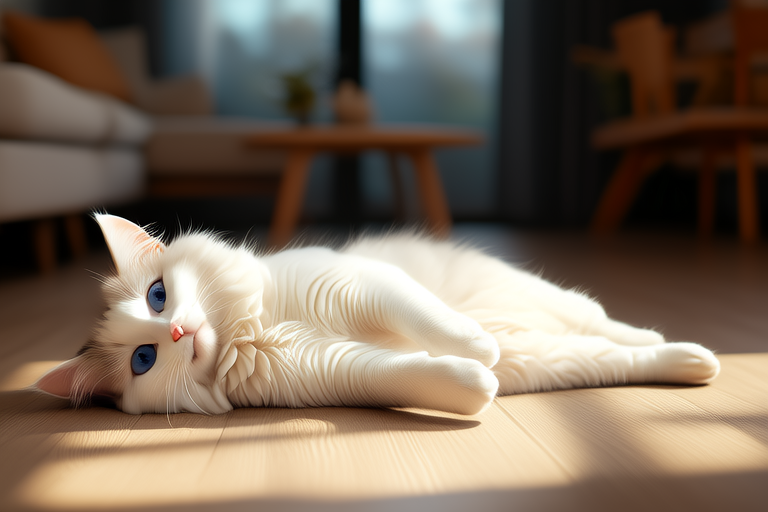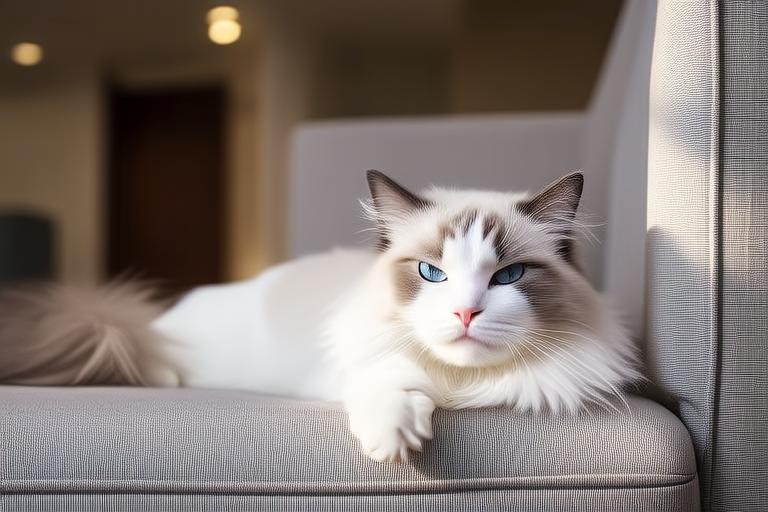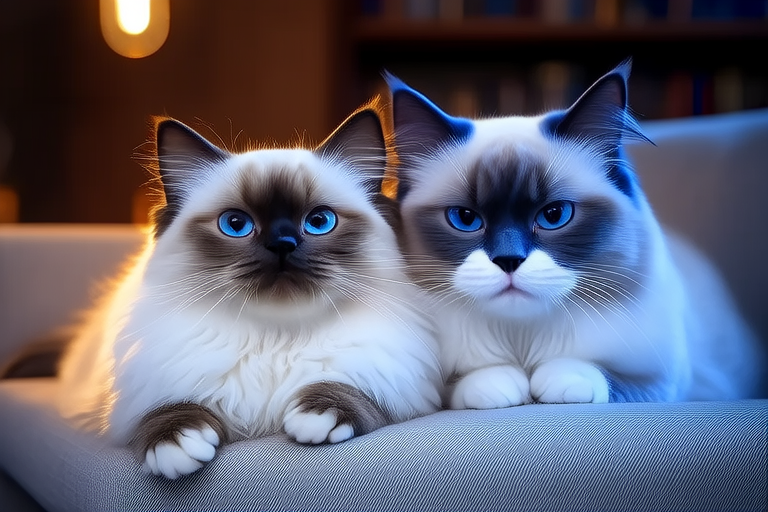
The Unique Temperament of Ragdoll Cats: A Delightful Companion
When it comes to choosing a pet, many people consider cats due to their independent yet affectionate nature. Among the various breeds, the Ragdoll stands out for its docile and affectionate demeanor, making it an ideal choice for families and individuals seeking a gentle companion. This article delves into the unique temperament of Ragdoll cats, exploring their docile and affectionate nature, the scientific insights into cat behavior, genetic factors influencing their personalities, and the historical context of the breed. We will also discuss common traits like their tendency to go limp when picked up, compatibility with families, and their interactions with other pets, supported by real-life examples from cat owners.
The History of Ragdoll Cats
The Ragdoll breed originated in California during the 1960s, thanks to Ann Baker, a breeder who developed the first Ragdolls. She selectively bred her Persian and Birman cats to create a breed known for its friendly and placid disposition. The name “Ragdoll” comes from the cat’s tendency to become limp and relaxed when held, much like a rag doll. This trait has made them popular among cat enthusiasts, particularly those seeking a cat that enjoys being cuddled and carried around.
Scientific Insights into Cat Behavior
Cats, like all animals, exhibit a range of behaviors influenced by both genetics and environment. In the case of Ragdolls, their docile and affectionate nature can be attributed to specific genetic factors that shape their behavior. One key aspect is their high level of oxytocin, often referred to as the “love hormone.” Oxytocin plays a crucial role in bonding between mother and offspring, but it also influences social interactions between humans and their pets. Studies have shown that cats with higher levels of oxytocin tend to be more affectionate and responsive to their owners, which is characteristic of Ragdolls.
Another factor contributing to the Ragdoll’s friendly nature is their genetic predisposition for lower levels of aggression. Unlike some other cat breeds, Ragdolls are less likely to display territorial or aggressive behavior towards humans or other animals. This makes them excellent companions for families with children or households with multiple pets. Their calm demeanor also extends to their interactions with strangers, making them more approachable and less likely to shy away from unfamiliar faces.
Genetic Factors Influencing Personality
The Ragdoll’s temperament is largely determined by its genetic makeup, which includes genes responsible for social behavior, playfulness, and fear responses. One gene of particular interest is the oxytocin receptor gene, which influences how cats respond to social stimuli. Ragdolls possess a variant of this gene that promotes increased social interaction and bonding, contributing to their reputation as loving and affectionate pets.
In addition to genetic factors, environmental influences also play a significant role in shaping a cat’s personality. Early experiences, such as exposure to different environments and socialization with humans and other animals, can have long-lasting effects on a cat’s behavior. Ragdoll kittens raised in nurturing environments tend to develop into well-adjusted adults with stable temperaments, further enhancing their suitability as family pets.
Common Traits of Ragdoll Cats
Ragdolls are known for several distinctive traits that set them apart from other cat breeds. One of the most notable characteristics is their tendency to become limp and relaxed when picked up, a behavior that gives them their name. This trait is believed to be related to their high levels of oxytocin, which promotes relaxation and bonding. Many owners report that their Ragdolls enjoy being held and carried around, often purring contentedly while in their owner’s arms.
Another common trait of Ragdolls is their playful nature, despite their generally calm demeanor. They are known for their love of interactive toys and games, especially those that involve batting or chasing. Owners frequently describe their Ragdolls as having a kitten-like curiosity and energy, even into adulthood. This playful side of their personality makes them enjoyable companions for owners looking for more than just a lap cat.
Compatibility with Families
Ragdolls are highly compatible with families, thanks to their gentle and affectionate nature. They are patient with children and enjoy being part of family activities. Many owners report that their Ragdolls participate in daily routines, such as following their owners from room to room or sitting nearby while they watch TV or read. Their calm demeanor also makes them well-suited for households with younger children, as they are unlikely to scratch or bite in response to rough handling.
One real-life example of a Ragdoll’s compatibility with families comes from Sarah, a mother of two young children. “Our Ragdoll, Luna, has been an absolute joy to have around,” she says. “She loves playing with our kids and is always there to comfort them when they’re upset. She’s so gentle and patient, and we’ve never had any issues with her getting too rough or aggressive.”
Interactions with Other Pets
Ragdolls are typically very sociable and get along well with other pets, including dogs and other cats. Their calm and non-aggressive nature makes them easy to introduce into multi-pet households. However, as with any new pet, it’s important to take steps to ensure a smooth introduction. Gradual introductions and supervised play sessions can help establish positive relationships between new pets.
One anecdote from a multi-pet household highlights the compatibility of Ragdolls with other animals. John, who owns both a dog and a Ragdoll named Charlie, shares, “Charlie and my dog, Max, have become best friends. They play together every day, and Charlie even follows Max around the house. I’ve never seen Charlie show any signs of aggression towards Max, and they seem to understand each other perfectly.”
Care and Maintenance
While Ragdolls are relatively low-maintenance compared to some other breeds, they still require regular grooming and care to maintain their health and appearance. Their semi-longhair coat requires brushing at least once a week to prevent matting and hairballs. Regular veterinary check-ups are also essential to ensure their overall health and well-being.
Owners should also provide their Ragdolls with a stimulating environment that encourages play and exploration. Interactive toys, scratching posts, and climbing structures can help keep them entertained and mentally engaged. Providing opportunities for exercise and play can also help prevent obesity, a common issue among indoor cats.
Conclusion
The Ragdoll cat is a delightful companion known for its docile and affectionate nature. With their high levels of oxytocin and genetic predisposition for social behavior, they make excellent pets for families and individuals alike. Their tendency to go limp when picked up, playful nature, and compatibility with other pets further enhance their appeal. By understanding the unique temperament of Ragdoll cats and providing proper care and attention, owners can enjoy a rewarding relationship with these charming felines.





